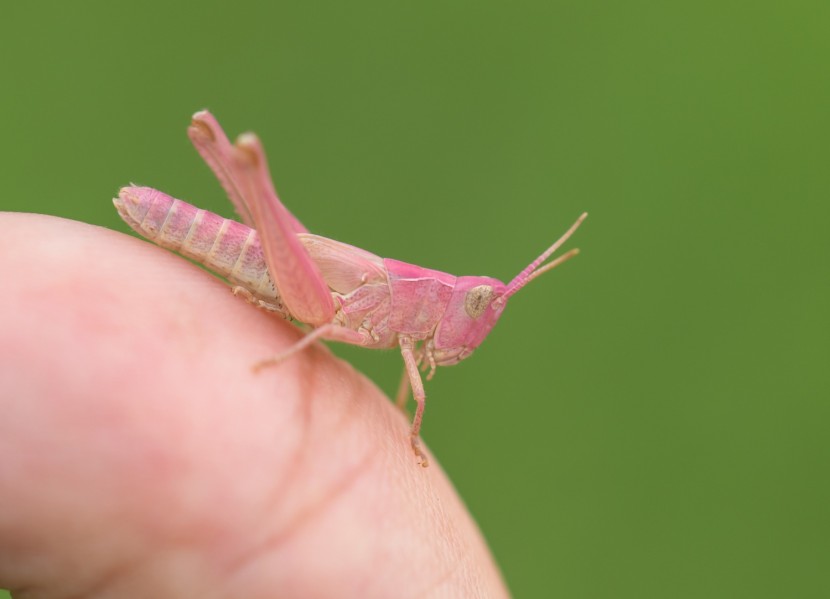
In Austin, Texas on Sunday, a 3-year-old boy found an extremely rare pink grasshopper in the garden and called his mother's attention. Allison Barger then took photos and sent it to virtual news channel KVUE, an affiliate of ABC.
Victoria Hillman, a wildlife biologist, photographer and National Geographic Explorer, explains that this rare genetic mutation is called erythrism. Red hair and freckles in humans is said to be a form of erythrism, as well. Hillman adds that even though this mutation was discovered in 1887 in another species closer to crickets, much is still to be learned about it. What is acknowledged is this recessive gene is similar to the one that causes albinism in animals.
This isn't the first time someone has found this elusive insect in their garden. In August 2019, British woman, Kate Kully managed to take a photo of one in her grandmother's garden in Gloucestershire, England. At least now it's known that these grasshoppers exist in two continents, and possibly in others.
National Geographic adds that pink grasshoppers are scarce because they don't usually reach adulthood. Pink is obviously not an ideal color for effective camouflage against predators and they easily get caught. Their brown and green counterparts are able to hide more easily and thus have gone forth and multiplied. This is not the case with Lubber grasshoppers.
These destructive garden pests are also bold in color. They can be red, yellow, orange, and black. However, Lubber grasshoppers release toxic chemicals when they are threatened. These toxins make other small animals like birds and opossums quite sick.
The chances of spotting one of these pink grasshoppers will probably still remain elusive. If and when they reach adulthood, they may remain pink, get lighter or lose their bright color altogether.
Whatever their colors may be, grasshoppers are essential to the ecosystem. While they are widely considered as farm and garden pests, these insects influence plant growth depending on what they consume. When a grasshopper eats a lot of nitrogen-rich plants then dies, the carcass enriches the soil and help carbohydrate-rich plants to grow.
The opposite happens when they are stressed; they eat carbohydrate-rich plants and when they expire, help produce nitrogen-rich plants instead. Their excrement are also great fertilizer for the soil, easier to break down than that of cow dung. This facility to help plant growth is why grasshoppers are crucial in the ecosystem.
Grasshoppers also serve as one of the main food sources of many animals including birds, spiders and lizards. Those creatures also play big roles in supporting the ecosystem. If grasshoppers are not in abundance in nature, their food source dwindles down and said creatures will not be able to fulfill own their roles in maintaining a healthy ecosystem. Hopefully, they leave the pink ones alone as many people would want to find more of them out there.
© 2025 HNGN, All rights reserved. Do not reproduce without permission.








